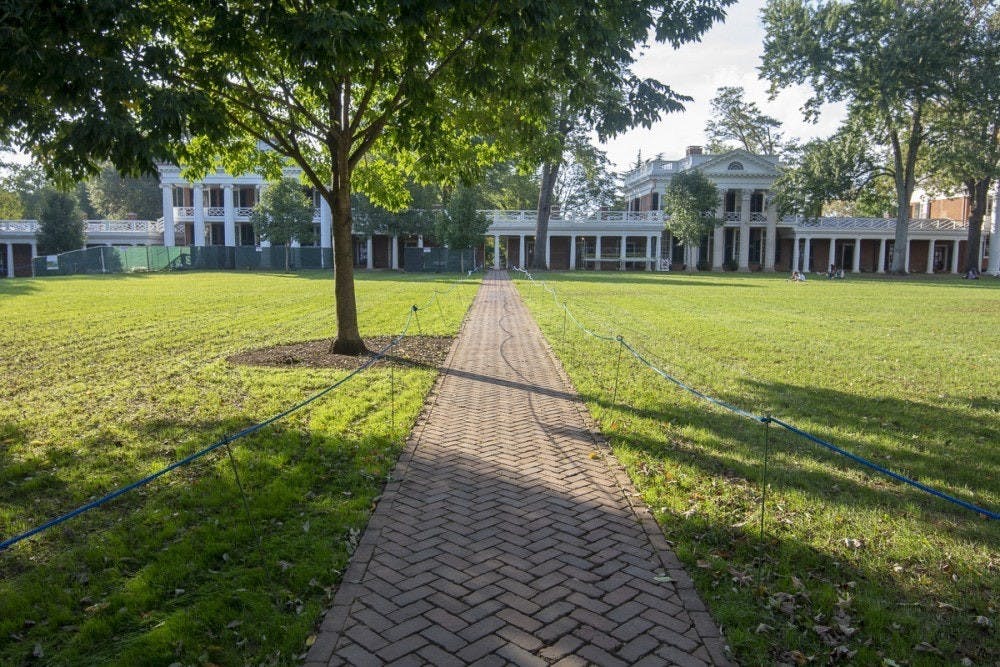University President Jim Ryan announced Thursday several additions to the University’s historic landscape. The ongoing projects, which will begin debuting this semester, utilize suggestions from the Change Agent Commemoration Advisory Committee — a committee chaired by University Architect Alice Raucher.
Ryan detailed three major additions to the University’s historic landscape — portraits and photographs of change agents, commemorative markers detailing important moments in University history and two new digital tours.
To formulate their suggestions, the Change Agent committee used the Advisory Committee on the Future of the Historic Landscape at U.Va.’s final report, which was released June 2018 and outlined principles for additions to the University’s landscape as well as for recontextualizing existing spaces. The advisory committee was one of several created in the aftermath of August 2017’s Unite the Right rally to evaluate the future of the University’s public spaces.
The final report noted the need to recognize the University’s agents of change in its physical spaces — adding that there exists no public memorialization of many individuals who profoundly impacted the University’s history, like the four women who sued the University to gain admittance into the then all-male College in 1969.
The University’s announcement detailed plans to recognize these women — Virginia Anne Scott, Nancy Anderson, Jo Anne Kirstein and Nancy Jaffe — in a new marker by Peabody Hall.
Another marker will commemorate the “Coat and Tie Rebellion” — a mass student protest to support the anti-war and pro-civil rights movements — by the Rotunda, and a marker on McCormick Road will celebrate the “Black Bus Stop,” which long-served as a gathering spot for Black University students.
Along with these new markers, the University will commission and curate portraits of “students who broke down racial, gender, and social barriers or blazed trails in other ways; faculty who engaged in path-breaking research; and staff who have devoted their talent and their hearts to this university.”
The first portrait to be installed is a painting of Julian Bond, former history prof. and civil rights leader, by second-year College student Sophia Kedzierski. Bond, who passed away in 2015, chaired the NAACP from 1998 to 2010 and cofounded the Southern Poverty Law Center in 1971. He is also the namesake of Bond House, and his portrait will be installed this semester in the residential community.
The final project will be the addition of two new digital tours of Grounds to the existing "Walking Tours of Grounds" app hosted by the University Library. The tours, which will include a Memorial to Enslaved Laborers Walking Tour and a University Grounds Walking Tour, were produced in collaboration with the University Library and students in the course “The Aftermath of Slavery at UVA and in Virginia,” which is taught by Kirt von Daacke, assistant dean and history professor.
In an email statement to The Cavalier Daily, von Daacke, who also co-chairs both the President’s Commission on the University in the Age Segregation and the President’s Commission on Slavery and the University, noted that the work of changing the University’s landscape is just one part of the effort to create a more inclusive University community.
“Getting there requires continued changes to the landscape, education, meaningful communal rituals of acknowledgement and remembrance, and so much more,” von Daacke said. “I’d like to think that our work over the past several years is understood as moving us in that direction.”
The Memorial to Enslaved Laborers Walking Tour, which provides history for the in-progress memorial, will debut April 11 after the memorial’s dedication ceremony.







